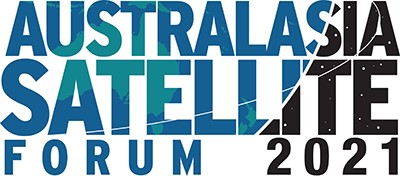|
UNSW Canberra Space Launches M2
CubeSat Satellites
23 Mar 2021
UNSW Canberra Space’s M2 CubeSat
satellites successfully launched with Rocket Lab’s ‘They
Go Up So Fast’ mission from New Zealand earlier today,
representing a significant step forward in Australia’s
sovereign space capabilities.
The M2 mission, a collaboration
between UNSW Canberra Space and the Royal Australian Air
Force (RAAF), brings together emerging technologies that
deliver advanced capabilities in Earth observation,
maritime surveillance, and satellite communications.
UNSW Canberra Space Director
Professor Russell Boyce said M2 will deliver
world-leading CubeSat technologies including formation
flying, where the craft is able to split into two
separate satellites (M2- A and M2-B) and fly in
sequence, enabling significant mission flexibility.
Supporting Australia’s space
situational awareness, the data captured by M2 can
inform maritime surveillance, weather observations and
low-orbit satellite traffic. This information is
processed through advanced in-orbit artificial
intelligence, on a platform reconfigurable throughout
the mission.
“The M2 mission is one of the most
complex CubeSat programs ever attempted. It will enable
both UNSW Canberra Space and the RAAF to gain experience
and capability in the development and operation of
in-orbit space science and technology missions,”
Professor Boyce said.
The M2 mission will play a role in
expanding the Australian space industry, which is
integral to solving the challenges the country will face
in the future.
“As we depend on space
infrastructure for resource management, secure
communications and data collection during extreme
weather events and bushfires, building our sovereign
space capabilities is critical for Australian security,”
Professor Boyce said.
Air Vice-Marshal Cath Roberts, Head
of Air Force Capability said the M2 mission is
incredibly exciting as it’s the first time the RAAF has
used formation flying in CubeSats.
“The two satellites will be able to
communicate with each other, as well as ground stations
back here on Earth, giving better quality data, with
greater detail and less lag time – all fundamentally
important for Australia’s defence. This innovative
home-grown approach has been designed to meet
Australia’s unique requirements for sovereign space
capability,” Air Vice-Marshal Cath Roberts said.
UNSW Canberra Space’s Spacecraft
Project Lead Andrin Tomaschett said the M2 mission was
almost entirely designed and built in Australia,
supported by optical telescopes developed for the
mission by Aperture Optical Sciences Inc. of
Connecticut, US.
At home, the mission is supported
by a domestic supply chain of some 30 companies. This,
combined with three spin-off companies from UNSW
Canberra Space to date, is an indicator of the
significant impact that targeted investment in the
research sector can have on building the nation’s space
industry.
“The M2 mission is our most complex
yet and it’s great to be launching again with Rocket
Lab,” Mr Tomaschett said.
“M2 comprises two connected
spacecraft that will separate on-orbit to engage in
formation flying, followed by a multitude of radio
frequency, imaging and laser experiments.”
It follows in the footsteps of the
M2 Pathfinder Mission, which launched with Rocket Lab in
June 2020 and delivered various risk mitigation
exercises for the team’s technologies ahead of the
launch of M2.
“The M2 Pathfinder successfully
tested various in-house technologies, including on-board
computing, attitude control, GPS, optical imaging,
communications and flight software,” Mr Tomaschett said.
The space missions will also
deliver research and educational outcomes for Defence
and civilian students studying engineering at UNSW
Canberra, strengthening Australia’s future space
workforce.

Fullerton (formerly
Westin) Hotel, Sydney
New Dates - 22 & 23 June 2021
|